
Keep Your Accounting Data Safe With Intuit Data Protect
 Data loss is a serious problem for small businesses. Research by the National Cybersecurity Alliance shows that over half of all small businesses are forced to close within six months of experiencing a data loss event. With Intuit Data Protect, however, you can safeguard your business’s accounting data. Available for QuickBooks Desktop Pro Plus, Premier Plus and Enterprise, this subscription service will automatically back up your accounting data.
Data loss is a serious problem for small businesses. Research by the National Cybersecurity Alliance shows that over half of all small businesses are forced to close within six months of experiencing a data loss event. With Intuit Data Protect, however, you can safeguard your business’s accounting data. Available for QuickBooks Desktop Pro Plus, Premier Plus and Enterprise, this subscription service will automatically back up your accounting data.
What Is Intuit Data Protect?
Intuit Data Protect is a backup service offered by the accounting software provider of its namesake. If you use one of the aforementioned versions of QuickBooks, you’ll be able to access it at no additional charge. When configured, it will automatically back up the files and folders that contain your accounting data.
It’s important to note that Intuit Data Protect isn’t limited to accounting data. You can use it to selectively back up your business’s accounting data, or you can use it to back up your entire computer.
Requirements
Like with other software, there are certain requirements for using Intuit Data Protect. It only works on Windows computers, for instance. You can’t install Intuit Data Protect on other operating systems (OSs), nor can you install it on a virtual Windows machine. Rather, you must install Intuit Data Protect locally on a Windows computer — specifically the computer that contains your company file.
You’ll also need to configure your computer to identify Intuit Data Protect as a “Trusted Site.” Search for “Internet Options” in the Windows search field at the bottom of the taskbar and select “Security.” You should see an option for “Trusted sites.” Select this option, after which you can add Intuit Data Protect and its associated sites.
Getting Started With Intuit Data Protect
To get started with Intuit Data Protect, launch QuickBooks on the computer that contains your company file and navigate to the “File” menu.” Choose “Back Up Company,” followed by “Activate Online Backup.”
You’ll be prompted to log in using the credentials associated with your Intuit Data Protect account. After logging in, choose your company file, followed by “Continue.” Make sure there’s a checkmark in the box for “Back up local selected documents,” after which you can click “Continue” once again. Go through the remaining options, and when you are finished, QuickBooks will automatically back up your company file.
Have anything else that you’d like to add? Let us know in the comments section below!

6 Common Payroll Accounting Mistakes to Avoid
 Payroll accounting comes with the territory of running a business. If your business has employees, you’ll need to pay them — and you’ll need to record these employee payments for both internal accounting purports and tax purposes. Mistakes can happen, however. According to the U.S. Internal Revenue Service (IRS), one-third of all employers make payroll accounting errors. Below are some of the most common payroll accounting mistakes.
Payroll accounting comes with the territory of running a business. If your business has employees, you’ll need to pay them — and you’ll need to record these employee payments for both internal accounting purports and tax purposes. Mistakes can happen, however. According to the U.S. Internal Revenue Service (IRS), one-third of all employers make payroll accounting errors. Below are some of the most common payroll accounting mistakes.
#1) Classifying Employees as Contractors
One of the most common payroll accounting mistakes is classifying employees as contractors. Also known as independent contractors, contractors are workers who provide on-demand labor for a business. They don’t follow a fixed schedule, nor are they entitled to employee benefits. Misclassifying employees as contractors is an all-too-common payroll accounting mistake.
#2) Overlooking Exempt and Nonexempt Statuses
When performing payroll accounting, you’ll need to consider whether employees have an exempt or nonexempt status. There are nuances between these two statuses. Nonexempt employees, for instance, are eligible for overtime, whereas exempt employees are not. But only employees who are aren’t paid a predetermined amount of money throughout the year are typically eligible for the nonexempt status.
#3) Unpained Training
A payroll accounting mistake that’s common among small and medium-sized businesses is unpaid training. Millions of businesses require new employees to undergo a training period. Whether the training period lasts one day or two weeks, new employees must be compensated for it.
#4) Using the Wrong Tax Rate
Many businesses make the mistake of using the wrong tax rate. Tax rates vary from year to year. Just because you used the correct tax rate for your business’s employees last year, you may need to use a different tax rate this year. As a business owner, it’s your responsibility to stay on top tax changes, including tax rates for federal income, state income, unemployment and more.
#5) Not Keeping Records
Another common payroll accounting mistake to avoid is not keeping records. Some businesses — particularly small businesses — assume that records aren’t necessary. If they only have a few employees on their payroll, they may pay their employees without keeping records. But the IRS requires all businesses, regardless of size, to maintain payroll records.
#6) Performing Payroll Accounting Manually
You shouldn’t attempt to perform payroll accounting manually. Even if your business is small with only a few employees, you should take advantage of software. Accounting software like QuickBooks supports payroll accounting. You can use it to easily handle all of your business’s payroll accounting needs.
Have anything else that you’d like to add? Let us know in the comments section below!

How to Run a Cash Disbursements Journal Report in QuickBooks
 Looking to create a cash disbursements journal report? Not to be confused with a cash disbursements journal report, it will reveal all of the checks your business has written for a given period. At the end of a fiscal quarter, for instance, many businesses run a cash disbursements journal so that they can review their expenditures. Cash disbursements journal reports specifically focus on check-based payments that businesses make to vendors, suppliers and other businesses. If you use QuickBooks Desktop, you can run a cash disbursements journal report in just a few easy steps.
Looking to create a cash disbursements journal report? Not to be confused with a cash disbursements journal report, it will reveal all of the checks your business has written for a given period. At the end of a fiscal quarter, for instance, many businesses run a cash disbursements journal so that they can review their expenditures. Cash disbursements journal reports specifically focus on check-based payments that businesses make to vendors, suppliers and other businesses. If you use QuickBooks Desktop, you can run a cash disbursements journal report in just a few easy steps.
Step #1) Access Custom Reports
To run a cash disbursements journal report in QuickBooks Desktop, you’ll need to access the custom reports section. Click the “Reports” menu and select “Custom Reports.” You can then select “Transaction Detail” to customize the report.
Step #2) Customize It
You’ll need to select a date range for your cash disbursements journal report. You’ll also need to check off various columns for information such as the type, memo, split and amount. Cash disbursements journal reports are fully customizable, so feel free to experiment with different customization options when running them. And remember, you can always go back and run a new cash disbursements journal report if you aren’t satisfied with the initial report.
Step #3) Choose a ‘Total By’ Criteria
QuickBooks will prompt you to choose a “total by” criteria. This will determine the way in which QuickBooks calculates the total amount that your business spent during the period. Available options for the “total by” criteria include payee, account or month.
Step #4) Select ‘Filters’ Tab
After choosing a “total by” criteria, select the “Filters” tab. You should see a list of available filters. For a cash disbursements journal report, select “Transaction type” from the available list. You can then click the drop-down menu for “Transaction type” and select “Multiple transactions.” Next, check off the appropriate columns for information such as check, paycheck and bill payment. To complete the process, click “OK.”
In Conclusion
Journal reports are an invaluable feature of Intuit’s popular accounting software. If you use QuickBooks, you can run journal reports to gain insight into your business’s finances. A cash disbursements journal report is a specific type of journal report that focuses on checks your business has written. You can run a cash disbursements journal report in QuickBooks by following the steps outlined here.
Have anything else that you’d like to add? Let us know in the comments section below!
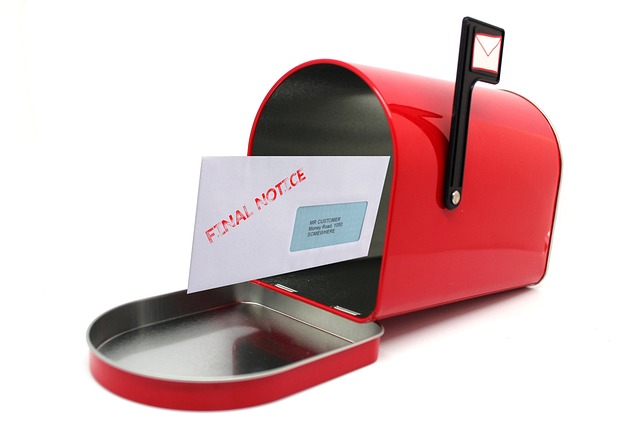
How to Customize Invoices With ‘Past Due’ in QuickBooks?
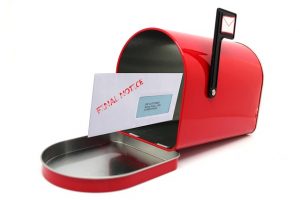 If your business allows customers to pay for products or services after the delivery or completion of those products or services, you’ll need to take precautions to ensure that they pay on time. Not all customers will pay their invoices on time. Research shows that over 10 percent of all invoices are paid late. In QuickBooks, however, you can customize invoices with “past due.” This otherwise simple label will make overdue invoices stand out so that you contact those customers to request payment.
If your business allows customers to pay for products or services after the delivery or completion of those products or services, you’ll need to take precautions to ensure that they pay on time. Not all customers will pay their invoices on time. Research shows that over 10 percent of all invoices are paid late. In QuickBooks, however, you can customize invoices with “past due.” This otherwise simple label will make overdue invoices stand out so that you contact those customers to request payment.
Enable the ‘Past Due’ Label for Templates
You can enable the “past due” label for one or more invoice templates. While logged in to QuickBooks Desktop, click the “Lists” menu and choose “Templates.” Scroll through the available list until you find the template for which you want to enable the “past due” label. Select the option to edit the template. Under the “Company & Transaction Information” section, click “Print Past Due Stamp,” followed by “OK.” Opening an overdue invoice will then prompt QuickBooks to add the “past due” label to it.
Add From an Invoice
The former method will automatically show the “past due” label on all overdue invoices with the selected template. But another method to leverage this QuickBooks feature is to manually add it from an invoice. Upon discovering an overdue invoice, open it in QuickBooks. Navigate to the “Formatting” section and select “Manage Templates.” You can then choose a template for the invoice. And under the “Company & Transaction” section,” click “Print Past Due Stamp..” You can complete the process by clicking “OK.”
How the ‘Past Due’ Label Works
The “past due” label is a feature in QuickBooks that’s designed to help business owners collect payments on late, overdue invoices. It will add a label or stamp to the top of invoices. This label will reveal “past due,” indicating that the customer needs to make a payment.
After adding the “past due” label to an overdue invoice, though, you’ll need to send the invoice to the customer. You can email invoices directly to customers. If you don’t know the customer’s email address, on the other hand, you can use direct mail. Once you’ve added the “past due” label to the customer’s invoice, print out the invoice. Next, you can place the invoice in an envelope and mail it to the customer’s home or business address.
Have anything else that you’d like to add? Let us know in the comments section below!
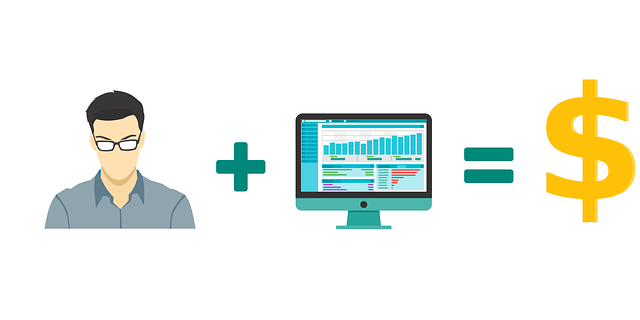
The 3 Main Parts of a Cash Flow Statement
 A cash flow statement is an important financial document used by businesses. Also known as a statement of cash flows, it provides insight into the money coming into and going out of a business. Regardless of your business’s size or operations, you may want to create a cash flow statement. You can use it to secure financing, plan a budget and more. While there are different ways to create a cash flow statement, they all revolve around three main parts.
A cash flow statement is an important financial document used by businesses. Also known as a statement of cash flows, it provides insight into the money coming into and going out of a business. Regardless of your business’s size or operations, you may want to create a cash flow statement. You can use it to secure financing, plan a budget and more. While there are different ways to create a cash flow statement, they all revolve around three main parts.
#1) Operating Activities
You’ll need to include a section for operating activities in your cash flow statement. It’s arguably the most important section in cash flow statements. As the name suggests, the operating activities section focuses on operational activities. It contains all incoming and outgoing money that’s directly associated with a business’s products or services.
Examples of operating activities include the following:
- Revenue from product or service sales
- Accounts receivable
- Employee payroll
- Rent and lease payments
- Utilities
#2) Financing Activities
In addition to operating activities, cash flow statements should contain a financing activities section. Financing activities include transactions associated with a business’s financing. If your business is financed with a loan, for instance, you’ll have to make payments to the lender. Loan payments such as this are considered financing activities. And like other financing activities, you should record them in the financing activities section of your business’s cash flow statement. If you make payments to a lender for a loan — or if a borrower makes loan payments to your business — you should record them in the financing activities section of your business’s cash flow statement.
#3) Investing Activities
Finally, the investing activities section focuses on investments. Investments, of course, will affect your business’s cash flow. You may purchase assets, such as equipment, for business. Alternatively, you may sell some of your business’s assets. These are considered investing activities, and you should record them in the investing activities of your business’s cash flow statement.
In Conclusion
They may sound complex, but cash flow statements use a relatively simple format. They feature three main parts: an operating activities section, a financing activities section and an investing activities section. The operating activities section covers all incoming and outgoing cash associated with operational activities. The financing activities section covers all incoming and outgoing cash associated with financing. And the investing activities section covers all incoming and outgoing cash associated with investments.
Have anything else that you’d like to add? Let us know in the comments section below!
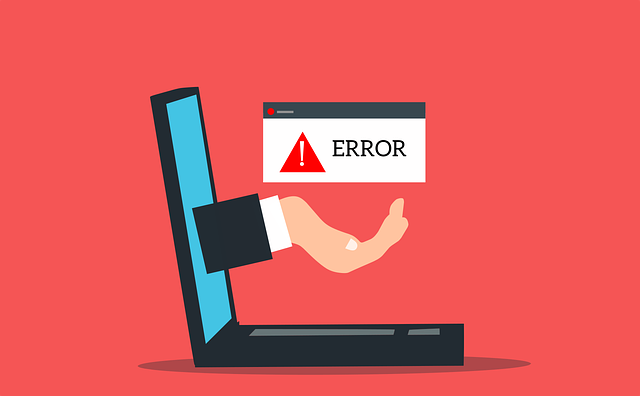
How to Avoid Accounting Errors With Your Small Business
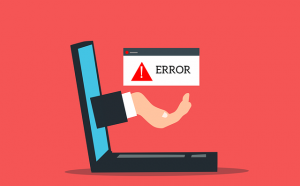 Allowing accounting errors to go unchecked can have a disastrous effect on your small business’s operations. It may hinder your business’s ability to secure loans or other forms of financing, or it can leave your business susceptible to tax audits. By following these tips, however, you can avoid accounting errors with your small business.
Allowing accounting errors to go unchecked can have a disastrous effect on your small business’s operations. It may hinder your business’s ability to secure loans or other forms of financing, or it can leave your business susceptible to tax audits. By following these tips, however, you can avoid accounting errors with your small business.
Stick With a Single Accounting Method
You can avoid accounting errors by sticking with a single accounting method. There are two primary accounting methods: cash basis and accrual. The cash basis method involves recording revenue transactions when you receive payment from customers and expense transactions when you pay vendors. The accrual method, on the other hand, involves recording transactions when they are incurred, such as when invoices are sent or bills are received.
Use QuickBooks
For greater protection against accounting errors, use QuickBooks. QuickBooks has become the preferred accounting solution for small businesses. Research shows that nearly 30 million small businesses use it to keep track of their financial transactions. It’s beginner friendly, scalable and loaded with helpful features. By using QuickBooks, your small business will be better protected against accounting errors.
Limit Access
Who can access your business’s accounting data? You may want to limit access to it. Allowing all of your small business’s employees to access its accounting data is a recipe for disaster. Some of them may make inaccurate entries that throw off your books. For cleaner records, you should consider limiting access to only accountants or other workers who need it.
Create Backups
Don’t underestimate the importance of creating backups. If you lose some or all of your business’s accounting data, you may be forced to start all over again from scratch — unless, of course, you have a backup copy. A backup copy will give you peace of mind knowing that your business’s accounting data is safe. Just remember to create backups regularly. You should also store the backup copies in multiple places, such as a cloud server and a local computer or machine.
Reconcile Accounts
Another tip to prevent accounting errors is to reconcile your business’s accounts. QuickBooks has a built-in reconciliation tool. You can use it to match your recorded transactions with those listed on your business’s credit card and bank statements. A process known as reconciliation, it will allow you to catch errors and discrepancies before they snowball into bigger problems.
Have anything else that you’d like to add? Let us know in the comments section below!

The Beginner’s Guide to Undeposited Funds in QuickBooks
 Are you familiar with undeposited funds in QuickBooks? It’s a native feature of the popular accounting software. With undeposited funds, you can essentially consolidate multiple customer payments before depositing that money into your bank account. For a better understanding of undeposited funds, keep reading.
Are you familiar with undeposited funds in QuickBooks? It’s a native feature of the popular accounting software. With undeposited funds, you can essentially consolidate multiple customer payments before depositing that money into your bank account. For a better understanding of undeposited funds, keep reading.
What Are Undeposited Funds?
Undeposited funds are exactly what they sound like: funds that your business has received but hasn’t yet deposited into its bank account. When customers pay you for goods or services, QuickBooks may place those funds in a temporary account. Known as an undeposited funds account, it will consolidate the customers’ payments. You can then initiate a transfer to move the money from the undeposited funds account to your bank account.
What’s the Purpose of Undeposited Funds?
By using undeposited funds, you can make fewer bank deposits. It’s designed primarily to consolidate customer payments. For example, you may have 10 customers, each of whom pay you $100. Without undeposited funds, you would have to make 10 bank deposits. Undeposited funds, however, allows you to consolidate the payments. Rather than making 10 bank deposits of $100 each, you can make a single bank deposit of $1,000.
How to Enable Undeposited Funds
In QuickBooks Desktop, you can enable undeposited funds in just a few easy steps. Start by accessing the “Edit” menu and navigating to “Preferences.” You should see a “Payments” option on the list. Click the “Payments” option and choose the “Company Preferences” tab.
Next, click the “Use Undeposited Funds as a default deposit to account” box so that it has a checkmark in it. Verify the box has a checkmark, after which you can complete the process by selecting “Ok.” You can now choose the undeposited funds account when you create sales receipts.
What About QuickBooks Payments?
If you use QuickBooks Payments to facilitate business-related transactions, you won’t need to use undeposited funds. QuickBooks Payments will automatically handle customer payments and the necessary bank deposits. For invoice payments and sales receipts, though, you may want to use undeposited funds.
You can also check your undeposited funds account to determine which customer payments are being held in it. The undeposited funds account is available to view in your Chart of Accounts. Navigate to the “Lists” menu and select “Chart of Accounts.” You can then right-click the “Undeposited Funds” link and choose “QuickReport: Undeposited Funds.”
Have anything else that you’d like to add? Let us know in the comments section below!

What Is Credit Utilization Ratio and How Does It Affect Your Business?
 What’s your business’s credit utilization ratio? Even if you know your business’s credit score, you might be unfamiliar with its credit utilization ratio. Nonetheless, if your business uses credit, it has a credit utilization ratio. It’s a credit-based financial metric that provides insight into how much credit your business uses. What is credit utilization ratio exactly, and how does it affect your business?
What’s your business’s credit utilization ratio? Even if you know your business’s credit score, you might be unfamiliar with its credit utilization ratio. Nonetheless, if your business uses credit, it has a credit utilization ratio. It’s a credit-based financial metric that provides insight into how much credit your business uses. What is credit utilization ratio exactly, and how does it affect your business?
Credit Utilization Ratio Explained
Credit utilization ratio represents the amount of credit your business is using relative to your business’s total available credit. It’s expressed as a percentage. A credit utilization ratio of 25% means your business is using one-quarter of its total available credit. If your business has $100,000 in total available credit — credit cards, lines of credit or other revolving credit accounts — and your business is currently using $25,000 on that available credit, its credit utilization ratio will be 25%.
How Credit Utilization Ratio Affects Your Business
Lenders may consider your business’s credit utilization ratio when determining its candidacy for a loan. A high credit utilization ratio can make it difficult to get approved for a business loan. A low credit utilization ratio, on the other hand, can increase your chances of getting approved for a business loan.
If your business’s credit utilization ratio is too high, you may have trouble paying for expenses. A high credit utilization ratio means less available credit to use. You can always use cash or other payment methods to cover the cost of expenses, but you may not be able to use credit.
Ways to Improve Your Business’s Credit Utilization Ratio
You can improve your business’s credit utilization ratio by using less credit. And when you do use credit to pay for goods or services, be sure to pay it off in a timely manner. Credit utilization ratio is based on revolving credit accounts. By paying down those revolving credit accounts, you’ll free up your business’s total available credit, thereby improving your business’s credit utilization ratio.
Another way to improve your business’s credit utilization ratio is to obtain but not use more credit. As your business’s total available credit increases, so will your business’s credit utilization ratio. Just remember not to use all of this credit. Credit utilization ratio represents the amount of credit your business is using relative to its total available credit. You can improve this metric by increasing your business’s total available credit and decreasing your business’s used credit.
Have anything else that you’d like to add? Let us know in the comments section below!

5 Tips for Smoother Reconciliations
 Reconciling your business’s credit card and bank statements is essential to preventing accounting errors. Mistakes can happen when recording financial transactions. You may accidentally record the wrong transaction or the wrong amount in QuickBooks. By reconciling your business’s credit card and bank statements, you can find and fix errors such as this. Reconciliation is an auditing process in which you match the financial transactions recorded in QuickBooks to those listed on your business’s credit card and bank statements. Below are five tips for smoother reconciliations.
Reconciling your business’s credit card and bank statements is essential to preventing accounting errors. Mistakes can happen when recording financial transactions. You may accidentally record the wrong transaction or the wrong amount in QuickBooks. By reconciling your business’s credit card and bank statements, you can find and fix errors such as this. Reconciliation is an auditing process in which you match the financial transactions recorded in QuickBooks to those listed on your business’s credit card and bank statements. Below are five tips for smoother reconciliations.
#1) Start With Oldest Statements
There’s an order in which you should reconcile your business’s credit card and bank statements. Always start with your business’s oldest statements while working your way to your business’s newest statements. If it’s been three months since you last reconciled your business’s statements, for instance, you should begin with the oldest statements from three months ago. Assuming there are no discrepancies, you can move on to the statements from two months ago, followed by last month’s statements.
#2) Use the ‘Hide Transactions’ Feature
When performing reconciliations in QuickBooks, there’s an option to hide all transactions after the statement’s end date. You can use this feature to focus exclusively on a single statement. You won’t see transactions from other statements in QuickBooks. When selected, this feature will hide all transactions after the opened statement’s end date.
#3) Place a Checkmark Next to Matched Transactions
You should place a checkmark next to matched transactions. Matched transactions are those that appear in Quickbooks and one of your business’s credit card or bank statements. Ideally, all of your transactions should match, meaning there are no discrepancies. Placing a checkmark next to a transaction in the QuickBooks reconciliation window indicates it’s accurate and, thus, matched to a statement.
#4) Include Interest and Fees
A common mistake business owners make when reconciling their transactions is omitting interest fees. If you have any business loans or credit cards, you’ll probably have to pay interest on them. Some lenders may charge fees as well. Payments involving interest and fees are transactions. And like all other transactions, you’ll need to reconcile them. Make sure the interest and fees recorded in QuickBooks are the same as those listed on your business’s credit card and bank statements.
#5) Match QuickBooks Transactions to Statement Transactions
The transactions recorded in your QuickBooks account should match those on your business’s credit card and bank statements. In other words, don’t assume that your QuickBooks transactions are accurate. Statement transactions are always accurate, so you should make sure your QuickBooks transactions match them.
Have anything else that you’d like to add? Let us know in the comments section below!

6 Mistakes to Avoid When Creating a Business Plan
 You can’t ignore the importance of a business plan. With this formal document, you’ll know exactly what you need to do to achieve your business’s goals. At the same time, a business plan will help you secure financing, as many lenders require it. There are several otherwise common mistakes, however, you should avoid making when creating a business plan.
You can’t ignore the importance of a business plan. With this formal document, you’ll know exactly what you need to do to achieve your business’s goals. At the same time, a business plan will help you secure financing, as many lenders require it. There are several otherwise common mistakes, however, you should avoid making when creating a business plan.
#1) Skipping the Executive Summary
Don’t skip the executive summary when creating a business plan. Business plans, of course, consist of multiple sections. The executive summary is typically the first section. As the name suggests, it offers an overview or summary of the contents of the business plan.
#2) Unattainable Goals
There’s nothing wrong with being optimistic, but you should set attainable goals when creating a business plan. You don’t want to set bold, unattainable goals that are beyond your business’s reach. If the goals described in your business plan are unattainable, they’ll set your business on a path to failure.
#3) Overlooking the Competition
Another common mistake to avoid is overlooking the competition. Business plans require a competitor analysis. You’ll need to specify and analyze your business’s competition in your business plan. Without a competitor analysis competition, you won’t be able to convey a unique selling proposition that distinguishes your business from other businesses in the same market.
#4) Making It Too Long
You should be conscious of the length of your business plan. Long business plans aren’t necessarily more effective than short business plans. On the contrary, if your business plan is too long, prospective investors, lenders and other professionals may not read it. How long should a business plan be exactly? Most experts recommend limiting the length of business plans to no more than 20 to 25 pages.
#5) Spelling and Grammar Errors
Don’t forget to proofread your business plan for spelling and grammar errors. Typos are bound to happen. Research shows that the average person has a typing accuracy rate of about 90%, meaning for every 10 words you type, you’ll probably make one typo. Allowing spelling and grammar errors to go unnoticed, though, can harm your business plan.
#6) Not Including Risks
Risks are an important part of a business plan. All businesses have risks. When seeking financing, investors and lenders will probably want to know about your business’s risks. You can convey potential risks in your business plan.
Have anything else that you’d like to add? Let us know in the comments section below!
